While out for a walk in some jungle yesterday, I noticed a tree which had been ring barked.
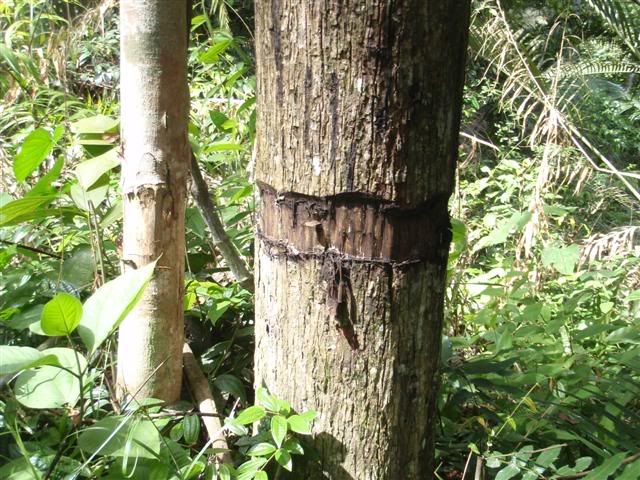
Looking up I saw that it was pretty much dead
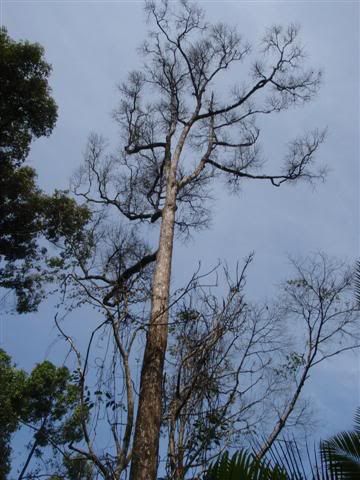
I was upset since this was good hill forest
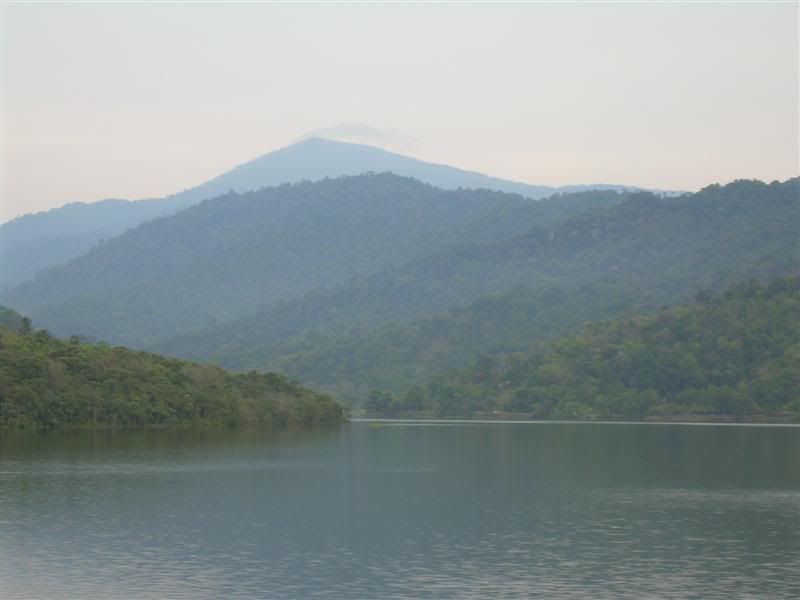
I then discovered more trees in a similar situation
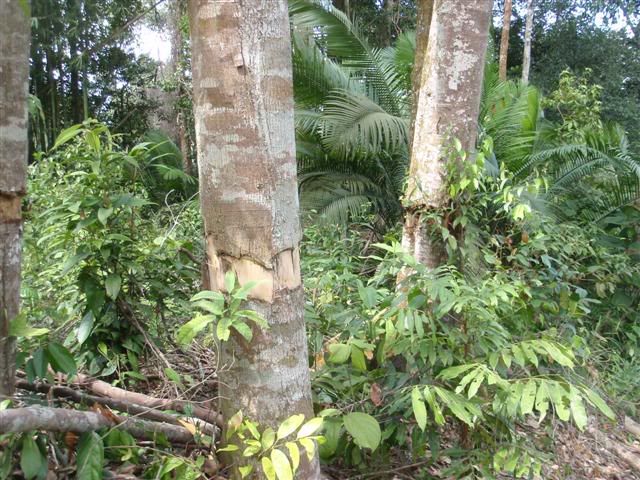
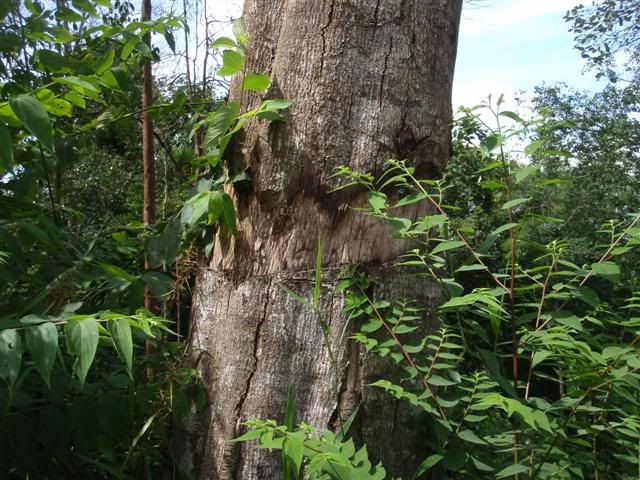
This was the work of an aboriginal who was preparing the area for a dusun, a jungle orchard, probably for durians which his family would sell in village markets. There was a village a few klicks away
I explored further and came to another area about a kilometre distant and I saw a tree prepped for felling.
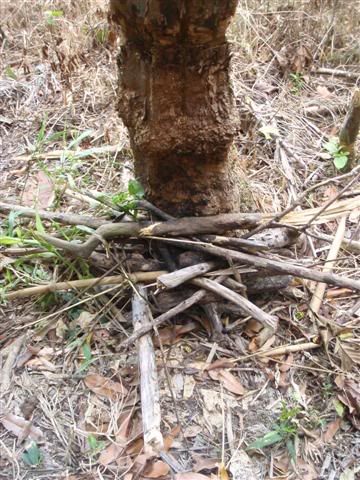
To discover natives using fire and ring barking to fell trees when nowadays even in Borneo they usually use chainsaws was exciting and I wasnt upset any more. These people had an ancient and moral right to work the land when they used these techniques.
Think of the patience required to ring the trees and then wait months or years before building the fire and felling the tree. And then planting and growing the durian trees ( a native species). Years before the first harvest. This man is leaving a legacy and livelihood for his grandchildren.
It shows a sense of connection to the land that is something we city dwellers can never share
Think of the pain if it was yours and it was felled in 20 years time for a housing estate.

Looking up I saw that it was pretty much dead

I was upset since this was good hill forest

I then discovered more trees in a similar situation


This was the work of an aboriginal who was preparing the area for a dusun, a jungle orchard, probably for durians which his family would sell in village markets. There was a village a few klicks away
I explored further and came to another area about a kilometre distant and I saw a tree prepped for felling.

To discover natives using fire and ring barking to fell trees when nowadays even in Borneo they usually use chainsaws was exciting and I wasnt upset any more. These people had an ancient and moral right to work the land when they used these techniques.
Think of the patience required to ring the trees and then wait months or years before building the fire and felling the tree. And then planting and growing the durian trees ( a native species). Years before the first harvest. This man is leaving a legacy and livelihood for his grandchildren.
It shows a sense of connection to the land that is something we city dwellers can never share
Think of the pain if it was yours and it was felled in 20 years time for a housing estate.


